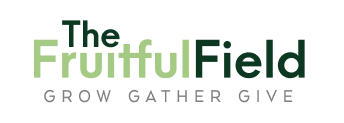A Season of Vegetables
When I first arrived at The Fruitful Field in the middle of an August thunderstorm, I wasn’t quite sure what to expect. I had never grown vegetables in a tropical setting like South Florida, so I was intimidated to begin. Once I saw all the empty rows that had already been built by volunteers, I was both excited and a bit worried about how I was going to fill all of these rows with enough plants to produce vegetables for families to eat. I remember the first day I worked in the garden, planting string beans and wondering how they would grow here in South Florida compared to how they do in Virginia. While planting, I thought about all of the other things I had planted back home and whether I would be able to grow them here. I didn’t realize that with lots of help I would end up growing more vegetables than I ever had at home and would learn so much along the way.
After planting string beans, I started my work in the nursery. We started just about all of our plants from seed, so I began with some of the things I knew people loved…peppers, tomatoes, broccoli, and cauliflower. Out back, I seeded lots of greens, like Mustards and broccoli raab. Daikons got planted in mass amounts, because we knew those would grow easily. I even tried some Yellow Summer squash, despite what everyone said about squashes not growing well in South Florida.
Our first few harvests in October and November were quite meager, compared to what we produced during the height of the season. Looking back, those first harvests had me a little concerned about whether we could really grow enough vegetables to provide produce for anyone. They were full of greens, daikons, and a few squash here and there…not necessarily everyone’s favorite vegetables. We quickly learned what people really liked and what people were less excited to eat.
In mid-November, the garden suffered its first real infestation, and I got to see just how bad the pests can get in South Florida. I have literally never seen so many aphids in my life. Fortunately, it was mainly the Daikons that were affected, so no one was too upset by a few less pounds of bitter radishes every week.
Despite people’s doubts, we were able to get a nice crop of Yellow Summer squash and cucumbers in November and December. We were even able to get Zucchini and Yellow Summer squash all the way until April. The best part about this was that people thought these were the most flavorful squashes they had ever had.
Our tomatoes took their sweet time ripening. I have never seen tomatoes take as long as these did. The first one didn’t ripen until we were a week through the new year, but after that, January, February, and March saw a huge variety and amount of tomatoes. We learned that there were varieties that definitely weren’t made for South Florida and its many bug inhabitants…like Mortgage Lifters, which were so big that before they could even partly ripen, the bugs would start munching on them.
March was full of greens, more greens than we could handle! People learned lots of different ways to cook them. Even kids who frequented the garden and didn’t really like greens found out they liked them cooked certain ways. Talk about getting your kids to eat their greens! April still held lots of greens and some late season broccoli, cauliflower, and cabbage, which people loved. As the heat and bugs crept in towards the end of the month, you could literally feel the plants starting to grow more slowly and produce less.
Our main growing season is coming to a close, but we’re still planting things that don’t mind the summer heat and that folks who visit the food pantries we work with will enjoy. We’ve still got lots of Collards, which are probably our biggest hit. Okra is starting to come along and should produce nicely this summer as well. We are even planting some Ethiopian and Dino Kale and trying out the Florida native Everglades tomatoes. And who doesn’t like sweet potatoes?! We’ll have a lot of those growing as well. As the summer heat makes its way in and the variety we can grow lessens, we’re starting to think about how we can grow even more vegetables this fall and how we can get people excited about eating local produce. So we hope you’ll stay tuned to hear more about all the awesome things this fall may hold at The Fruitful Field!

